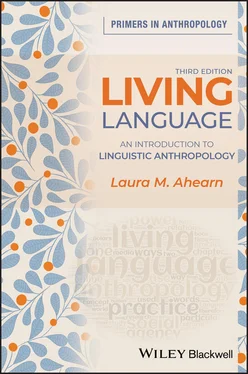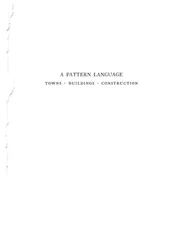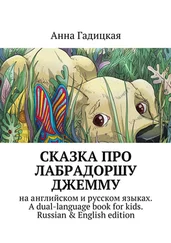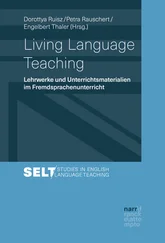215 194
216 195
217 196
218 197
219 198
220 199
221 200
222 201
223 202
224 203
225 204
226 205
227 206
228 207
229 208
230 209
231 210
232 211
233 212
234 213
235 214
236 215
237 216
238 217
239 218
240 219
241 220
242 221
243 222
244 223
245 224
246 225
247 226
248 227
249 228
250 229
251 230
252 232
253 233
254 234
255 235
256 236
257 237
258 238
259 239
260 240
261 241
262 242
263 243
264 244
265 245
266 246
267 247
268 248
269 249
270 250
271 251
272 252
273 253
274 254
275 255
276 256
277 257
278 258
279 259
280 260
281 261
282 262
283 263
284 264
285 265
286 266
287 267
288 268
289 269
290 270
291 271
292 272
293 273
294 274
295 275
296 276
297 277
298 278
299 279
300 280
301 281
302 282
303 283
304 284
305 285
306 286
307 287
308 288
309 289
310 290
311 291
312 292
313 293
314 294
315 295
316 296
317 297
318 298
319 299
320 300
321 301
322 302
323 303
324 304
325 305
326 306
327 307
328 308
329 309
330 310
331 311
332 312
333 313
334 314
335 315
336 316
337 317
338 318
339 319
340 320
341 321
342 322
343 323
344 324
345 325
346 326
347 327
348 328
349 329
350 330
351 331
352 332
353 333
354 334
355 335
356 336
357 337
358 338
359 339
360 340
361 341
362 342
363 343
364 344
365 345
366 346
367 347
368 348
369 349
370 350
371 351
372 352
373 353
374 354
375 355
376 356
377 357
378 358
379 359
380 360
381 361
382 362
383 363
384 364
385 365
386 366
387 367
388 368
389 369
390 370
391 371
392 372
393 373
394 374
1.1 Cartoon demonstrating how certain styles of speech can both reflect and shape social identities.
1.2 Khim Prasad (left) during the Pounded Rice Ritual, with the bride, Indrani Kumari (seated at the right, completely covered by a shawl), and the bridal attendant (standing in the center).
1.3 “Zits” cartoon about the varying cultural meanings associated with language use.
1.4 Jakobson’s model of the multifunctionality of language.
1.5 Cartoon playing off the language ideology that considers French a romantic language.
1.6 Semiosis as a relation between relations.
2.1 A gesture with many possible meanings: “Peace,” “V for victory,” or “Turn around, I want to kiss you”.
4.1 The cultural concepts of hed and save in Gapun, Papua New Guinea.
5.1 Relationship between language and thought according to the (mistaken) “strong” version of the Sapir–Whorf Hypothesis.
5.2 Scene from 2016 film Arrival. Picture credit: Paramount Pictures.
5.3 Relationship among language, thought, and culture according to contemporary understandings of the Sapir–Whorf Hypothesis within linguistic anthropology.
5.4 Cartoon ridiculing the tendency of some scholars (especially those without any training in linguistics or anthropology) to make tendentious claims about the effects of a lack of a specific word in a given language.
5.5 Another of the many representations in popular culture of the “Eskimo words for snow” myth.
5.6 Set-up for experiment involving coordinate systems.
6.1 Strong, multiplex, high-density network with individual “X” at center.
6.2 Weak, uniplex, low-density network with individual “X” at center.
6.3 Peter Auer’s continuum of codeswitching, language mixing, and fused lects.
7.1 Nepali love letter (with all identifying features removed).
7.2 Cartoon showing how certain linguistic forms, such as be + like, can index social identities.
9.1 Spatial configuration at August 1990 Tij songfest in Junigau (X = woman, Y = man).
10.1 Cartoon referring to author Deborah Tannen’s ability to understand gendered language. Tannen writes about the communication between men and women.
12.1 Ten most commonly spoken languages in the world in 2020 (including those spoken as second languages).
12.2 Top four most commonly spoken native or second languages in the world in 2020 (including those spoken as second languages).
12.3 Cartoon depicting normal and inevitable changes in a language over time.
13.1 Doxa as that which is taken for granted and therefore outside the universe of discourse.
1.1 English pronouns in the nominative case
1.2 Nepali pronouns in the Junigau dialect
1.3 Noun classes in Swahili
5.1 Metaphors that a research organization in New Zealand, The Workshop, encouraged people to avoid and embrace during the COVID-19 pandemic
7.1 “Be + like” as a percentage of total quotatives in face-to-face and IM talk (2003 face-to-face n = 248; 2003 IM n = 35; 2006 face-to-face n = 468; 2006 IM n = 175; table created from data reported in Jones and Schieffelin 2009:88)“Be + like” as a percentage of total quotatives in face-to-face and IM talk (2003 face-to-face n = 248; 2003 IM n = 35; 2006 face-to-face n = 468; 2006 IM n = 175; table created from data reported in Jones and Schieffelin 2009:88)
10.1 Findings of Hyde’s meta-analyses regarding gender differences in communicative behavior
Language, especially as it is used in real-life social contexts, can be absolutely fascinating but rather challenging to study. Linguistic anthropology as a discipline offers a set of concepts and tools for undertaking this challenge. My goal in this book is to provide an accessible introduction to the main principles and approaches of linguistic anthropology without overly simplifying the complex contributions of scholars in the field. To the degree that this book succeeds in accomplishing this goal, it will be useful not just to graduate and undergraduate students studying linguistic anthropology for the first time (to whom I very much hope to communicate my enthusiasm for the field) but also to all sorts of other readers who might, for various reasons, be interested in “living language.” These readers might include, for example, cultural anthropologists, practicing anthropologists, sociologists, or political scientists who have never looked closely at language in their work but could benefit from doing so. I also hope the book will be of value to linguists whose work thus far has been more technical and abstract in nature but who would like to turn their attention to the study of actual instances of linguistic practice. And finally, I hope the book will appeal to anyone who has a natural curiosity about the central role language plays in shaping and reflecting cultural norms and social interactions.
Within the United States, linguistic anthropology is one of the four traditional fields of anthropology: archaeology, biological (also called physical) anthropology, cultural anthropology, and linguistic anthropology. When Franz Boas helped to establish the discipline of anthropology in the United States more than one hundred years ago, most anthropologists were trained in all four of these fields and often conducted research in more than one of them. As scholarship became more specialized over the past century, however, such breadth became much rarer. One of my main purposes in writing this book is to convince anthropologists in other subfields, especially cultural anthropology, of the advantages of becoming well-trained in linguistic anthropology as well as in their “home” subdiscipline. After all, much of the data collected by cultural anthropologists (and by many researchers in other fields) is linguistic in nature. Linguistic anthropologists (e.g., Briggs 1986:22) have argued that such data should not be treated as a transparent window through which the researcher can reach to obtain facts or information. Rather, interviews and other sources of data for social scientists should be considered as communicative events in which meanings are co-constructed and interwoven with various forms of context. This book will, I hope, provide useful tools and examples of analyses that help researchers produce nuanced analyses of many different kinds of social and linguistic practices.
Читать дальше












